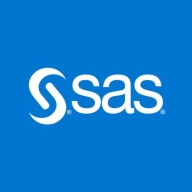

SAS Data Management and SnapLogic are strong competitors in the data integration space. SAS is favored for its enterprise-level data analysis and management capabilities, while SnapLogic stands out for its user-friendly interface and rapid deployment features, making it more appealing for environments requiring faster implementations.
Features: SAS Data Management provides extensive ETL, data quality, and integration capabilities, offering a unified view of enterprise data through its MDM component. Users find its analytics robust and flexible. SnapLogic is a low-code platform that simplifies complex integrations with snaps, allowing visual integration building. It supports rapid deployment in hybrid cloud environments and offers efficient high-volume data transfers.
Room for Improvement: SAS Data Management is criticized for its high cost and complexity, particularly for non-ETL tasks. Licensing is often viewed as inflexible, and users seek better connectivity and streamlined processes. SnapLogic is seen as less customizable for complex scenarios. Users desire improvements in stability, error debugging, and more pre-built integration options for enhanced API management.
Ease of Deployment and Customer Service: SAS operates mostly on-premises, which users find cumbersome compared to SnapLogic's flexible hybrid and public cloud deployment options. While SnapLogic is recognized for its ease of use, both platforms have mixed reviews on customer service. SAS support is considered diligent, with room for improvement, while SnapLogic users seek deeper technical support for complex issues.
Pricing and ROI: SAS Data Management is seen as costly, potentially limiting for smaller businesses despite its value in regulated industries. It delivers substantial ROI. SnapLogic, while also expensive, offers consumption-based pricing, appealing for cost-sensitive projects. Users appreciate its impact on reduced development times and integration efficiency, leading to considerable ROI.
The technical support from SnapLogic is excellent, and I would give it a complete ten.
I rate the scalability of SnapLogic as eight out of ten.
I would rate the stability of SnapLogic as nearly ten out of ten.
If the AI capabilities and integrations were more intuitive and easy to learn for new users, it would be greatly beneficial.
I tend to frequently communicate with SnapLogic to ask for additional features, and they have been responsive.
There would be only one point of improvement if the price could be lower.
SnapLogic is positioned at around seven or eight out of ten in terms of pricing.
I also like the whole child-parent pipeline feature; it allows me to break up a process into smaller pieces and then have one big pipeline that controls these smaller pipelines.
I find SnapLogic to be user-friendly, especially for beginners with limited experience in data engineering or ETL.


Every decision, every business move, every successful customer interaction - they all come down to high-quality, well-integrated data. If you don't have it, you don't win. SAS Data Management is an industry-leading solution built on a data quality platform that helps you improve, integrate and govern your data.
The SnapLogic Intelligent Integration Platform uses AI-powered workflows to automate all stages of IT integration projects – design, development, deployment, and maintenance – whether on-premises, in the cloud, or in hybrid environments. The platform’s easy-to-use, self-service interface enables both expert and citizen integrators to manage all application integration, data integration, API management, B2B integration, and data engineering projects on a single, scalable platform. With SnapLogic, organizations can connect all of their enterprise systems quickly and easily to automate business processes, accelerate analytics, and drive transformation.
We monitor all Data Integration reviews to prevent fraudulent reviews and keep review quality high. We do not post reviews by company employees or direct competitors. We validate each review for authenticity via cross-reference with LinkedIn, and personal follow-up with the reviewer when necessary.